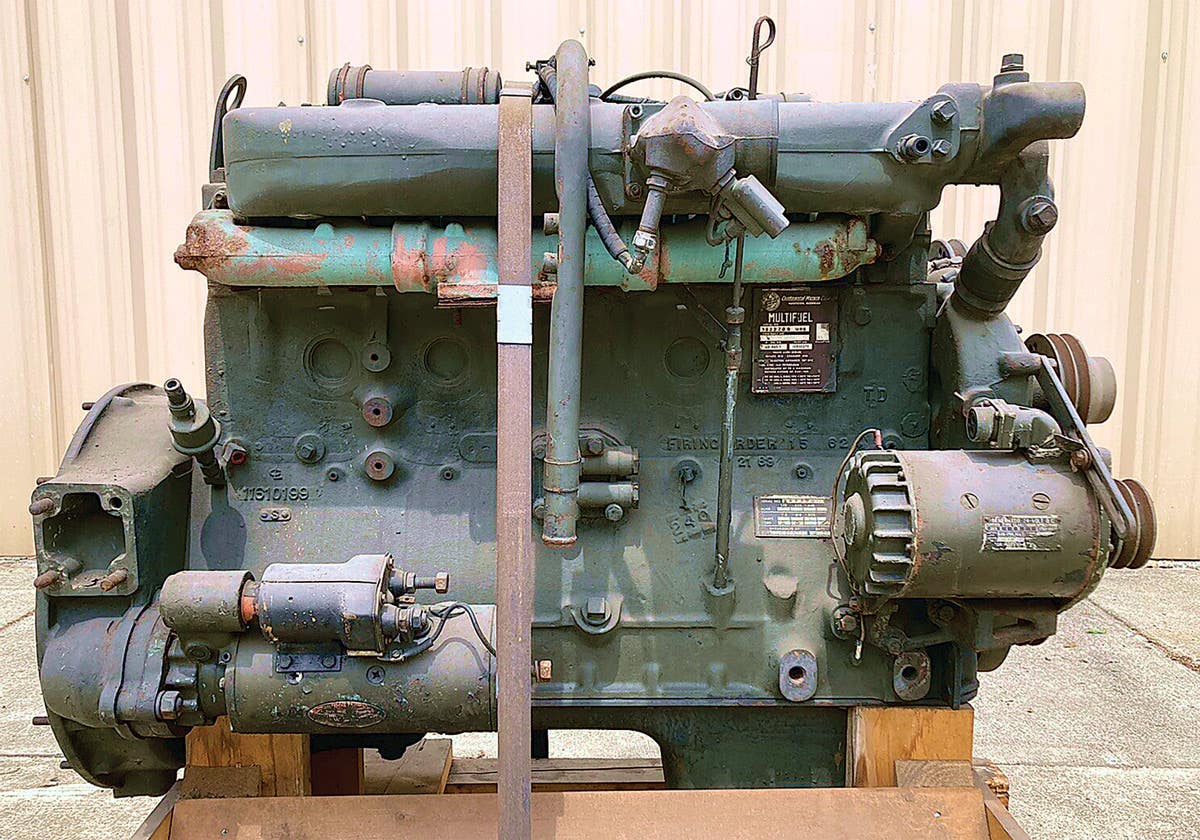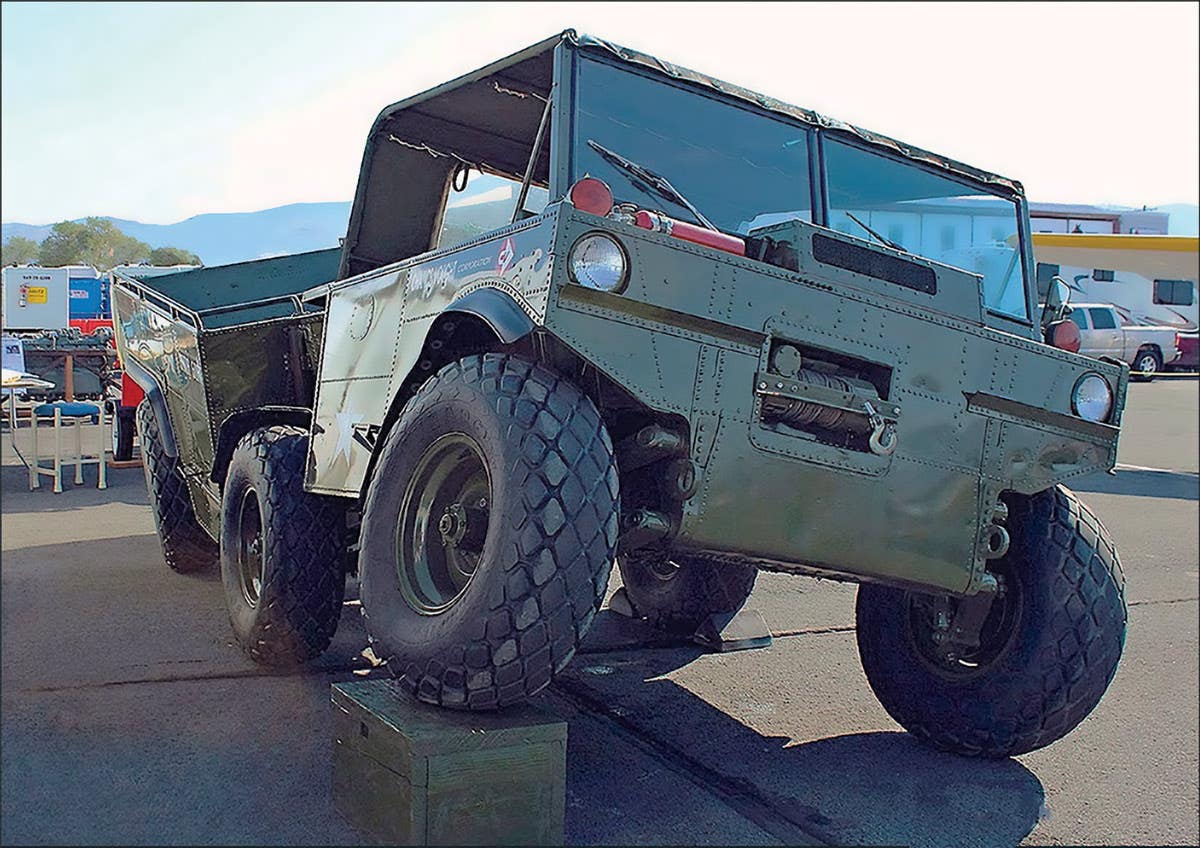Lord Louis Mountbatten In His Majesty’s Service
Any serious study of the 20th century has to include the name of history’s more colorful figures, Louis Mountbatten.
By William J. Felchner
Any serious study of the 20th century has to include the name Louis Mountbatten. One of history’s more colorful figures, Mountbatten held many titles during his lifetime: Vice Admiral in the British Royal Navy, aircraft carrier commander, Chief of Combined Operations/Commandos, Supreme Allied Commander Southeast Asia, Viceroy of India, Governor-General of India, Commander of Mediterranean fleet, admiral of the fleet, and Chairman of the UK Defense Staff and Chiefs of Staff Committee. Quite a remarkable career for a man who also happened to be the great-grandson of Queen Victoria.
Louis Mountbatten came into this world as Prince Albert Victor Nicholas Louis Francis of Battenberg at Frogmore House, near Windsor Castle, on June 25, 1900. His mother was Princess Victoria, the granddaughter of then 81-year-old Queen Victoria, while his father was Prince Louis Battenberg, a captain in the British Royal Navy. Nicknamed “Dickie,” Mountbatten was schooled primarily at home during his early years by his mother who had always wanted to be a teacher.
In September 1910, Mountbatten was enrolled at the Lockers Park preparatory boarding school, and in 1913 began attending the Osborne Naval Training College. One year later, he entered the Royal Navy College at Dartmouth. In 1916, with the Great War now in its second bloody year, he was appointed midshipman following the successful completion of his final exams (he finished 18th out of 80 cadets) and joined the crew of the H.M.S. Lion. The Lion, which had just come out of dock for repairs following a sea battle at Jutland with the German Imperial Navy, almost immediately headed back into action.
Thus, at 16 years of age, Mountbatten experienced combat for the first time as the Lion and other British ships tried to prevent the German fleet from attacking Sunderland. Later in the war, Mountbatten would serve aboard the H.M.S. Queen Elizabeth and would also serve as second-in-command of the 600-ton H.M.S. P.31, a small ship armed with light guns and depth charges which was primarily designed to destroy the deadly German U-boats. As a first lieutenant on the P.31, the 18-year-old Mountbatten presided over a crew of 50 petty officers and other navy ratings.
Following the end of World War I Lord Louis Mountbatten, as he was now known (the “prince” title had been axed in a government public relations move during the war), enrolled at Cambridge University in October 1919. Here, along with other junior regular navy officers, Mountbatten polished up his education for a year which had been cut short at Dartmouth because of hostilities.
With a year of Cambridge under his belt, Mountbatten returned to the sea in 1920, embarking on a world cruise aboard the battle cruiser H.M.S. Renown as flag-lieutenant to Rear Admiral Sir Lionel Halsey. The seven-month cruise traversed over 46,000 miles, making stops in Australia, New Zealand, Hawaii, the West Indies, and other ports of call. In Trinidad, Mountbatten played tennis and in the Hawaiian Islands he tried his hand at surfing off Waikiki Beach. These athletic pursuits which simply enhanced his image as a handsome, dashing naval officer.
In July 1921, Louis Mountbatten met Edwina Ashley, the granddaughter of the enormously wealthy international banker Sir Ernest Cassel, at a Claridge’s ball given by Grace Vanderbilt. It was, according to both, an immediate fusion of hearts and minds, and the two were later married on July 18, 1922. By this time, Edwina was a very wealthy woman having inherited over seven million pounds from her grandfather. Mountbatten then took six months leave from the navy at half-pay, and he and his bride embarked on a honeymoon divided into two halves, the first to Europe, and the second to the United States.
Crossing the English Channel, they drove by car through France, Spain, and Germany. They then arrived by ocean liner in New York, where they met a number of luminaries, including composer Jerome Kern and baseball player Babe Ruth. While in Washington, they visited President Warren Harding, and ate at a Navy League dinner packed with top admirals and senior officers, Mountbatten was one of the principal speakers. The couple then journeyed to Los Angeles by private railroad car on the Atchison, Topeka & Santa Fe. They were introduced to a number of film celebrities, including Douglas Fairbanks, Mary Pickford, Charlie Chaplin, and Cecil B. De Mille. While in Hollywood, the newlyweds were presented with their most unusual wedding gift, a short film directed by Charlie Chaplin titled Nice and Friendly. Appearing in the movie were Chaplin, child star Jackie Coogan, and Louis and Edwina Mountbatten. Upon completion of the short, Chaplin, ever the comic, informed Lord Mountbatten that he was an awful actor!
Following his long honeymoon, Mountbatten once again concentrated on his naval career. Military service, he told author Richard Hough, was very important, for “marriage to a very rich woman posed problems. I then realized forcibly that the only hope of standing on my own legs was to work. I couldn’t hope to produce the money that Edwina had. So I had to work very hard in the one profession where money doesn’t count.”
In 1923, Mountbatten was assigned to the H.M.S. Revenge. While serving on the ship he applied for more naval education, this time at the Signal School in Portsmouth. Once accepted, Mountbatten embarked on a two-year stint as a land-based sailor, working first at Portsmouth and then in Greenwich. In his spare time, Mountbatten enjoyed an active social life, playing polo and hosting lavish parties at Brook House in London. When the Mountbattens’ first child, Patricia, was born in 1924, Brook House was the scene of a grand party, with movie stars Douglas Fairbanks and Mary Pickford attending the christening of the baby.
During the 1920s and 1930s, Mountbatten continued his rise in the Royal Navy. In 1928, he was promoted to lieutenant-commander, and from 1931 to 1933 he served as fleet wireless officer for the Mediterranean fleet. In 1932, his promotion to commander came through from the brass. In time, Mountbatten soon had his first command in the form of H.M.S. Daring, a new 1,400-ton class “D” destroyer which could do 35 knots and was armed with four 4.7-inch guns and eight 21-inch torpedo tubes. Said Mountbatten later of naval command: “A captain is God Almighty. He can do exactly what he wants with his ship. You can make Easter Sunday into Good Friday. You can make yourself hated or loved. And for all this, they pay you—pay you for doing the most wonderful job in the world.”
In 1935, Mountbatten took command of the H.M.S. Wishart, which had been docked in Singapore. One year later, he was given a staff appointment in the Naval Air Division. One of his first priorities, as he put it in one of his briefs, was “to bring the Fleet Air Arm back into the Navy.” A strong proponent of air power, Mountbatten gravely wanted to update naval air operations, bringing in new planes and trained personnel. He argued that the current air arm lagged seriously behind that of the United States Navy and, more importantly, the Japanese Imperial Navy.
Ten days before the start of World War II, Mountbatten, now a captain, took command of the H.M.S. Kelly and the eight men o’ war 5th Destroyer Flotilla. Almost from the first volley of the conflict, Mountbatten and his naval group found themselves in the midst of the fighting at sea. The so-called “Phony War” of the first several months, where the opposing armies and air forces enjoyed a relative calm, was certainly the antithesis for Mountbatten and his cohorts as the British Royal Navy hunted down the deadly German U-boats which were preying on Allied shipping. In fact, on the first day of the war, U-boats had sent to the bottom the liner Athenia. One day later, the German subs had scored again, placing two torpedoes into the British aircraft carrier Courageous, sending her to the depths of the ocean and claiming 500 lives. One of many ships answering the Courageous’ frantic SOS call that night was Mountbatten and H.M.S. Kelly, who plucked survivors from the water and ferried them back to Devenport.
On Oct. 14, 1939, while pulling convoy duty in the Western Approaches to the British Isles, the Kelly’s “Asdic” (submarine detection apparatus) picked up the “ping” of what she believed to be a German U-boat. The Kelly then closed on the signal, saturating the submerged target with depth charges. The resulting explosions soon found their mark, as the crippled U-boat’s bows emerged from the water, stood vertically in the air for just a moment and then slipped beneath the surface, headed to her final resting place at the bottom of the sea. Mountbatten and Kelly had scored their first confirmed kill.
Following a return to port and several months as skipper of the Kelvin, Kelly’s sister ship, Mountbatten was back in command of H.M.S. Kelly once again.
Kelly and her crew saw considerable action in the weeks to come, experiencing intense bombardment by the German Luftwaffe during the Allied campaign in Norway. While leading the 5th Destroyer Flotilla against a German mine laying operation off the Dutch coast in May 1940, the Kelly was torpedoed by a German E-boat. The torpedo detonated just above the No. 1 boiler room, ripping a 50-foot hole in the ship and killing and wounding dozens of sailors below. Repair parties then managed to stabilize Kelly as she was towed home by the destroyer Bulldog. The danger, however, was far from over, as a suicidal German E-boat appeared out of the darkness at high speed and collided with Bulldog, bouncing off the destroyer’s hull and then striking Kelly. As Mountbatten tried to save his ship from sinking, evacuating the entire surviving crew (10 tons of personnel, he figured), Stuka dive bombers appeared on the scene, bombing Kelly and Bulldog and strafing the small rescue boats unloading Kelly’s wounded crew. During the battle Mountbatten manned a .5-caliber machine gun while trying to fend off the marauding Stukas. Finally, after a 90-hour ordeal, the badly-damaged Kelly, now aided by a tugboat, made it home to dry dock. Before she could be repaired, however, the carnage below had to be removed. With mangled bodies still lying around and shredded flesh hanging from pipes and bulkheads, Mountbatten himself, along with a chief petty officer, began to clean up the bloody mess.
In late November 1940, H.M.S. Kelly was once again ready for action. Her days, however, proved to be short-lived. In May 1941, the Kelly was ordered to Crete in the Mediterranean. Bitter fighting for the island was taking place between the entrenched British and the invading Germans. Kelly’s mission was to bombard Maleme airfield and intercept German ships which were unloading reinforcement troops from the Green mainland. On May 23, 1941, the Kelly and its battle group came under a withering attack by Ju-87 Stukas, each of which carried a single 500-kilogram bomb beneath its belly. The first hit came on the destroyer Kashmir, which took a bomb dead amidships. She went down in two minutes, with one of her gunners still blazing away, knocking a Stuka from the sky just before the ship faded into the sea. Kelly then became the next casualty when a Stuka laid its deadly cargo right on X gun deck, exploding near the engine room. The Kelly then began to roll, pitching many of its crew, along with its captain, into the oil-stained water. The survivors, who had managed to swim to a Carley raft in the confusion, were then picked up by the destroyer Kipling. The air attacks, this time from Ju-88s, continued as the Kipling made its way across 400 miles of ocean back to Egypt, leaving Kelly to a watery grave. The sinking of the Kelly would forever be etched in the mind of Mountbatten.
In the summer of 1941, Prime Minister Winston Churchill made the decision to name Mountbatten head of Combined Operations, the British commandos who were carrying out raids in Nazi-occupied Europe. Churchill had known Mountbatten for quite a long time, and had selected him for his brains and positive, can-do attitude. It was quite an honor for a 41-year-old junior naval captain.
As chief of Combined Ops, Mountbatten experienced both success and failure. One of the more early successes of his command was the March 27–28, 1942, raid at St. Nazaire in France, where commandos rammed the port’s lock gates with an old, expendable U.S. Navy destroyer laden with delayed explosive charges. The ensuing damage deprived the Tirpitz, one of Nazi Germany’s mightiest battleships, of her only dockyard on the French Atlantic seaboard.
As for failures, there was the still-controversial raid at Dieppe on the coast of northern France in Aug. 19, 1942. This operation proved to be a military fiasco for the Allies. Of the 5,000 Canadian commandos who primarily carried out the raid, nearly 1,000 were killed in action, 2,000 (many of whom were wounded) taken prisoner, and of the 2,000 who made it home, nearly 25 percent of them had been wounded. In addition, the Allies lost a destroyer and 33 landing craft as well as 106 RAF aircraft which had been shot down in one of the biggest fighter battles of WWII. The lessons learned at Dieppe would later color Allied thinking as they planned for the Normandy invasion of June 6, 1944.
Following the Quebec Conference in August 1943, Lord Mountbatten was offered the post of Supreme Allied Commander of Southeast Asia. Flabbergasted by the offer, Mountbatten told Churchill that he would like 24 hours to think about it. First, he told the prime minister, he wanted to consult with the British and American Chiefs of Staff in order to see if they agreed with the choice and that they would back him in full. After conferring with several generals from both staffs as well as President Roosevelt himself, Mountbatten went back to Churchill and told him the answer was, “Yes.” On Aug. 25, 1943, Mountbatten’s appointment was made public. The announcement, however, was not greeted with universal approval, as a number of powerful American politicians became incensed, thinking that Mountbatten, “the royal playboy in peacetime,” might usurp General Douglas MacArthur’s authority in the war against Japan. They didn’t have to worry, for Mountbatten proved to be a splendid diplomat and soldier, eventually molding together a truly diverse collection of Allied forces—British, American, Commonwealth, Indian, Chinese, Ghurka, Free French, Dutch, Burmese, and East and West African—and leading them to eventual victory in the China-Burma-India theater. Mountbatten’s crowning achievement as Supreme Allied Commander came on Sept. 12, 1945, when he officially accepted the Japanese surrender at Singapore. Following the war, Mountbatten, as Supremo in the region, still had direct control over 128 million people. “I had to get them food, see to their health, give them law and order, give them information, a broadcasting service. I had to offer them a policy, and I went ahead and did exactly what I thought was right,” he later said. “And in this connection, I always tried to imagine what these decisions would look like in history.”
In March 1947, Prime Minister Clement Attlee named Mountbatten viceroy of India. It was his mission to gradually end British rule in a diverse country of some 400 million people: 250 million Hindus, 90 million Moslems, six million Sikhs, and numerous other sects. On Aug. 15, 1947, Mountbatten and the British voluntarily handed over power to the great sub-continent, leaving India to fulfill its own destiny. Mountbatten, now in the transitional capacity of governor-general, stayed on in India until June 1948.
In the ensuing years Louis Mountbatten returned to his first love—the Royal Navy—where he held a number of important positions, including commander-in-chief Mediterranean Fleet (1952), C-in-C Allied Forces Mediterranean (1953–1954), admiral of the fleet (1956), and chief of UK Defense Staff and Chairman of Chiefs of Staff Committee (1959–1965).
Mountbatten’s life tragically came to an end in County Sligo, Republic of Ireland, on Aug. 27, 1979. There, members of the Provisional Irish Republican Army detonated a remote-controlled bomb on his motor cruiser, Shadow V, at exactly 11:45 a.m. The ensuing explosion ripped the boat apart, throwing everyone aboard into the water. Among the dead were 15-year-old fisherman Pal Maxwell, whose naked, mutilated body was hauled into a boat by rescuers; 83-year-old Lady Brabourne, whose son was married to Mountbatten’s daughter, Patricia; Nicholas Brabourne, Mountbatten’s 14-year-old grandson (his twin bother, Timothy, had survived the blast with injuries to the face and body); and Mountbatten himself. Although much of his clothes had been torn away by the explosion, rescuers could still make out the emblem which adorned the old war hero’s jersey. It was H.M.S. Kelly.







